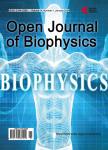Simplifying the Analysis of Enzyme Kinetics of Cytochrome <i>c</i>Oxidase by the Lambert-W Function
Simplifying the Analysis of Enzyme Kinetics of Cytochrome <i>c</i>Oxidase by the Lambert-W Function作者机构:Department of Chemistry Physical and Biophysical Chemistry Bielefeld University Bielefeld Germany Department of Molecular Spectroscopy Max Planck Institute for Polymer Research Mainz Germany Department of Physics Experimental Molecular Biophysics Freie Universitaet Berlin Berlin Germany
出 版 物:《Open Journal of Biophysics》 (生物物理学期刊(英文))
年 卷 期:2012年第2卷第4期
页 面:117-129页
学科分类:1002[医学-临床医学] 100214[医学-肿瘤学] 10[医学]
主 题:Cytochrome c Oxidase Enzyme Kinetics Enzymes Lambert-W Function Michaelis-Menten Model
摘 要:Conventional analysis of enzyme-catalyzed reactions uses a set of initial rates of product formation or substrate decay at a variety of substrate concentrations. Alternatively to the conventional methods, attempts have been made to use an integrated Michaelis-Menten equation to assess the values of the Michaelis-Menten KM and turnover kcat constants directly from a single time course of an enzymatic reaction. However, because of weak convergence, previous fits of the integrated Michaelis-Menten equation to a single trace of the reaction have no proven records of success. Here we propose a reliable method with fast convergence based on an explicit solution of the Michaelis-Menten equation in terms of the Lambert-W function with transformed variables. Tests of the method with stopped-flow measurements of the catalytic reaction of cytochrome c oxidase, as well as with simulated data, demonstrate applicability of the approach to de termine KM and kcat constants free of any systematic errors. This study indicates that the approach could be an alternative solution for the characterization of enzymatic reactions, saving time, sample and efforts. The single trace method can greatly assist the real time monitoring of enzymatic activity, in particular when a fast control is mandatory. It may be the only alternative when conventional analysis does not apply, e.g. because of limited amount of sample.



